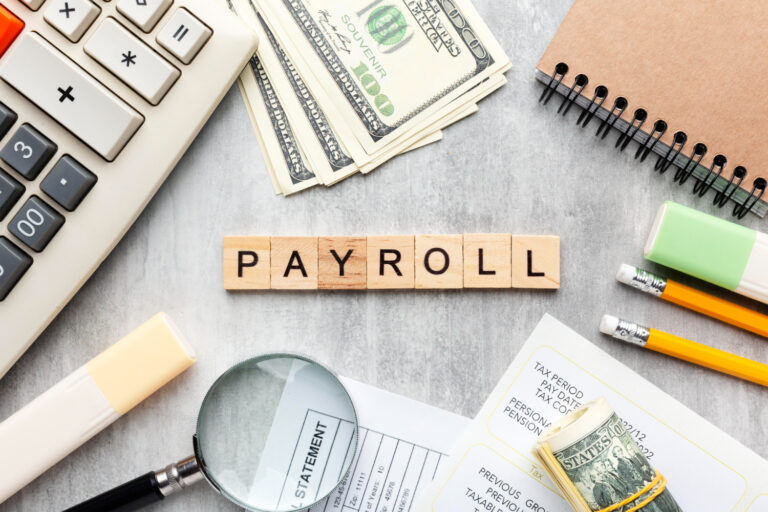7 Effective Employee Selection Process in 2025

In today’s competitive talent market, the cost of a bad hire can exceed 30% of the employee’s first-year earnings, a figure that highlights a critical business reality: your employee selection process is one of the most important strategic functions your organization will perform.
As we navigate 2025, the landscape is shaped by AI-driven technologies, a global talent pool, and evolving candidate expectations. A haphazard approach is no longer viable. An effective, modern selection process is not just about filling a vacancy; it’s about building a resilient, high-performing workforce that drives long-term success.
This guide provides a definitive roadmap to designing and implementing a selection process that attracts and secures top talent in the modern era.
What is the Employee Selection Process?
The employee selection process is the structured, multi-step method used by organizations to choose the most qualified and suitable candidate for a specific job from a pool of applicants. It is a distinct function that follows recruitment.
While recruitment focuses on attracting and creating a large pool of interested candidates through sourcing and advertising, selection is the process of evaluating and narrowing down that pool to identify the single best individual for the role. A well-defined selection process uses a combination of interviews, assessments, and background checks to ensure decisions are objective, fair, and aligned with organizational goals. For a deeper understanding of how this fits into your overall talent strategy, it’s useful to understand the fundamentals of what is manpower planning.
Strategic Importance of an Effective Selection Process
A meticulously crafted selection process is a competitive advantage. The benefits extend far beyond simply filling a role.
Achieves Long-Term Organizational Goals: By hiring individuals whose skills and values align with the company’s mission, a strategic selection process ensures that new hires contribute to long-term growth and innovation. This alignment is a key principle in many modern recruitment models.
Significant Cost Savings: The right hire reduces expenses associated with high turnover, lost productivity, and the need for repeated recruitment cycles. A streamlined process also minimizes administrative costs and time spent by hiring managers.
Enhanced Performance and Positive Culture: Selecting for both job-specific skills and culture fit results in employees who are more engaged, productive, and likely to remain with the company. This creates a more stable and positive work environment.
Improved Employer Brand: A professional, transparent, and respectful selection process enhances the candidate experience. Even unsuccessful applicants leave with a positive impression, boosting the company’s reputation and attracting future top talent.
7 Key Stages of a Modern Employee Selection Process
To ensure consistency, fairness, and the best possible hiring outcomes, a modern selection process should follow a clear, sequential path.
Stage 1: Application Sourcing and Intelligent Screening
The process begins when applications are received through various channels like job boards, company career pages, or referrals. In 2025, organizations leverage Applicant Tracking Systems (ATS) to manage high volumes of applications. These systems can automatically screen resumes for keywords, skills, and qualifications outlined in the job description. The use of AI in this initial screening helps to quickly identify a longlist of qualified candidates, allowing recruiters to focus their efforts on the most promising applicants.
Stage 2: Preliminary Assessment and Virtual Screening
Once a longlist is created, a preliminary screening is conducted. This is typically a short phone or video call designed to verify the information on the resume, assess basic communication skills, gauge the candidate’s interest in the role, and discuss salary expectations. This stage is a quick and effective way to filter out candidates who are not a strong match, ensuring that only the most viable individuals move on to more time-intensive interviews.
Stage 3: In-Depth and Structured Interviews
This is often the most critical stage of the selection process. In-depth interviews are designed to delve deeper into a candidate’s experience, skills, and behavioral competencies. To ensure fairness and reduce bias, it is essential to use structured interviews, where all candidates are asked the same set of predetermined questions and evaluated using a standardized scorecard. Common formats include:
Behavioral Interviews: Candidates are asked to provide specific examples of how they have handled work situations in the past.
Situational Interviews: Candidates are presented with hypothetical scenarios they might face in the role and are asked how they would respond.
Panel Interviews: The candidate is interviewed by a group of stakeholders, allowing for diverse perspectives in the evaluation. This is especially important when considering the difference between IT and non-it recruitment, as technical and cultural fit must be assessed by various team members.
Stage 4: Comprehensive Candidate Assessments
To gain a holistic view of a candidate’s capabilities, organizations use a variety of assessments that go beyond the interview. These data-driven tools provide objective insights into a candidate’s potential for success.
Skills-Based Tests: These practical tests, such as coding challenges for developers or writing assignments for content creators, evaluate a candidate’s technical proficiency and ability to perform the core tasks of the job.
Cognitive Ability Tests: These assessments measure critical thinking, problem-solving abilities, and logical reasoning. They are strong predictors of job performance across a wide range of roles
Personality and Behavioral Assessments: These tools help determine if a candidate’s personality, work style, and motivations align with the company culture and the specific demands of the role. They can identify traits like adaptability, teamwork, and leadership potential.
Stage 5: Thorough Background and Reference Checks
Before extending an offer, it is crucial to conduct background and reference checks to verify the information provided by the candidate. This stage typically involves:
Verifying Employment History and Education: Confirming past job titles, responsibilities, and academic credentials.
Contacting Professional References: Speaking with former managers or colleagues to gain insights into the candidate’s work ethic, performance, and interpersonal skills.
Criminal Background Checks (where applicable and legally permissible): Ensuring there are no red flags that would make the candidate unsuitable for the role. Partnering with a professional firm for employee background verification ensures this is done legally and thoroughly.
Stage 6: The Final Selection Decision
At this stage, the hiring manager and other key stakeholders convene to make a final decision. All the information gathered throughout the process from interviews, assessments, and reference checks is reviewed collectively. A data-driven approach, using the insights from standardized scorecards and assessment results, is crucial for making an objective and informed choice. The final decision should be a collaborative one, ensuring buy-in from the entire hiring team.
Stage 7: The Job Offer and Onboarding
Once the top candidate has been selected, a formal job offer is extended. This offer should be comprehensive, outlining the salary, benefits, start date, and other terms of employment. Understanding the nuances between company payroll and third-party payroll can be critical at this stage. After the candidate accepts the offer, the selection process officially concludes, and the onboarding process begins, which is vital for integrating the new hire into the organization successfully.
Best Practices for Hiring Top Talent in 2025
To stay competitive, organizations must continuously refine their selection process. Here are some best practices for 2025:
Standardize Your Process: A consistent, structured process for every role ensures fairness, reduces bias, and makes the outcomes more reliable and legally defensible.
Train Your Hiring Managers: Interviewers should be trained on effective, structured interview techniques and educated about unconscious biases to ensure they are making objective evaluations
Embrace a Data-Driven Approach: Rely on data from scorecards, assessments, and performance metrics to make hiring decisions, rather than relying on “gut feeling.” This is a key part of choosing the right recruitment partner.
Prioritize Skills Over Pedigree: In 2025, there is a growing trend towards skills-based hiring, where demonstrated abilities and practical experience are valued more than traditional qualifications like university degrees.
Continuously Evaluate and Improve: Regularly solicit feedback from both candidates and hiring managers to identify bottlenecks and areas for improvement in your selection process.
Frequently Asked Questions (FAQ)
What is the main goal of the employee selection process?
The main goal is to identify and hire the candidate with the right skills, qualifications, and culture fit who can best contribute to the organization’s success and long-term goals.
How has AI changed the selection process in 2025?
AI automates and streamlines tasks like resume screening and initial candidate communication, allowing recruiters to make faster, data-driven decisions while reducing unconscious bias and focusing on strategic human interaction.
Why is candidate experience important during selection?
A positive candidate experience enhances your employer brand, attracts higher-quality applicants, and ensures that even rejected candidates leave with a favorable impression of your company, potentially for future opportunities.
What is the difference between recruitment and selection?
Recruitment is the process of attracting a pool of applicants for a job, while selection is the process of choosing the best candidate from that pool through interviews, tests, and checks.
How can I reduce bias in my selection process?
Use structured interviews with standardized questions, leverage objective data from skills assessments, and provide unconscious bias training for all hiring managers to ensure a fair and equitable process.
Conclusion
An effective employee selection process is no longer a simple administrative task; it is a strategic imperative that directly impacts an organization’s performance, culture, and bottom line. By implementing a structured, multi-stage process that leverages modern tools and best practices, businesses can move beyond simply filling roles and begin building a workforce that is truly a competitive advantage. The journey from identifying a need to welcoming a new hire is complex, but with a well-designed process, it becomes a powerful engine for growth.
To navigate this complexity and design a selection process tailored to your unique needs, partnering with an expert can be invaluable. Reinforcement Consultants specializes in creating and implementing modern, effective hiring strategies. From leveraging AI and data-driven assessments to training your hiring teams, we can help you build a world-class employee selection process that secures the top talent you need to thrive in 2025 and beyond.






